
Post WW1 policy cleanup
After the great war, the move started in 1912 towards a more standardized navy ended the “prototype-mania” that plagued French submarine construction before and during WW1. By 1919, war reparations included German U-boats, which allowed French engineers a close look at that technology, rationalized and optimized to wage a total, unremitting and unforgiving submarine warfare.
There were lots of ideas in the air about submarines, with some ingenuity to match about supposed capabilities. Among these the cruiser submarine concept all but eclipsed former surface raiders. Cruisers submarines were very much the craze on top of all this.

French Submarine Daphne at anchor in the 1920s Src >
French submarine Types in use
In reality, the French only ventured once in this type, preferring building classes until 1936 of relatively small submarines fit for the Mediterranean, the exception being the oceanic types of Le Redoutable class, tailored for the Atlantic and threatening overseas trade throughout the French Empire. Incremental innovation was much more paced down compared to the pre-ww1 engineering fest, more rationale, leading to small classes with some gradual improvements over the years. Probably the most successful of all these were the Rubis minelayers types (see below).
French interwar submarine development started with the Maurice Caillot (1921), Pierre Chailley (1922), and Regnault (1924), late ww1 designs, discarded in 1936-37. (more on this on future dedicated posts).
Also the acquisition of German WW1 submarines helped keep the endge in technological developments, with the Roland Morillot (ex. UB26), Victor Reveillé (ex. U79), Jean Autric (ex. U105), Léon Mignot (ex. U108), René Audry (ex. U119), Halbronn (ex. U139), Pierre Marrast (ex. U162), Jean Roulier (ex. U166), Trinité Schielemans (ex. UB94), Carissan (ex. UB99), Jean Corre (ex. UB155), all discarded in 1935-37.
French submarine in wartime
When war broke out, the French had 78 submarines, most of the coastal type. Soon, defeat on land bring the navy in an untenable situation, still the impressive, force of a theoretical neutral power hostage of its occupant. The fleet became a lever for Vichy, but also a potential threat for both sides. As the war goes on after Mers-el-Kebir, some French subs joined the allies, while others took action against them, like the Bezevier torpedoing HMS Resolution off Dakar, or isolated actions attempts in November 1942 against the US Navy.
A few submarines served with the Free French and one in particular rose to particular fame: Rubis of the Saphir class, laying mines that sunk or damaged twenty-four ships of the axis. The very last French submarines in construction were seized by the occupant, and completed, seeing service for some in Italian and German hands. After the war the French embraced nuclear power, joining the club under De Gaulle’s commitment, and French subs evolved accordingly. It’s no wonder SSBNs were named after the successful oceanic types, and SNA’s after the famous minelayer subs.
 Requin class (1924)
Requin class (1924)

Illustration of the Caiman in 1941
The treaty of Washington, concluded in 1923 between the great naval powers of the time, was interested in the ships of lines, in the cruisers, but rather little in the submersibles and other light ships. France had the free field, which she exploited with such concepts as the Surcouf. As for its oceanic Atlantic units, it relied on German wartime catches (7 ocean units obtained in repairs), and on 1922-23 series ships such as the Pierre Chailley, the O Byrne, Maurice Callot, and Regnault. A tonnage of 950 tons and an action radius (RA) of more than 7000 nautical miles was quickly established.

Submarine Souffleur in Gdynia harbour, circa 1926 – By Roman Morawski – Narodowego Archiwum Cyfrowego PD in Poland & USA (cc)
Requin Design
The drawing was ready as early as 1923, and construction of the Shark began incontinent. Launched in 1924, it was the top-seeded of nine units, the last of which was launched in 1927 and completed in 1929. They were able to duel to 80 meters thanks to their double hull, and had ten torpedo tubes, including four in two surface-mounted mobile benches (one of them had commercially available 400mm tubes). The outer tubes, a specifically French configuration, were reloaded only surface and dock, 16 torpedoes were in reserve, which gave them a consistent cruising time. Their defects were partially corrected during a redesign in 1937-39.
Operational career:
Four units were captured at Bizerte, three of which were transferred and served a time under the Italian flag before being sunk, one of them scuttling. The Narwhal and the Morse were captured in a minefield in operation and jumped in 1940, the souffleur will be torpedoed by mistake by the HMS Parthian in 1941, the Caiman was scuttled in Toulon, and the Porpoise passed to the FNFL and served until 1945.

French Submarine Morse – Q117 – USN Axis Submarine Manual, ONI 220-M (cc)
Caracteristiques:
Displacement: 947 t. standard – 1440 t. Full Load
Dimensions: 78.25 m long, 6.84 m wide, 5.10 m draft.
Propulsion: 2 propellers, 2 Sulzer/Schneider diesels, 2 mot. electric, 2900/1800 hp. Surface speed/dive 14/9 knots.
Practical diving depht: 80 m – RA: 7,000 nautical miles surface (7 knots), 70 nautical dives (7 knots).
Armament: 10 TLT of 550 mm, 2 of 400 mm, 1×100 mm, 2×8 mm AA.
Crew: 51
 Le Redoutable class (1928)
Le Redoutable class (1928)
The class of oceanic submersibles The Redoutable was initiated in 1925. It came from the study of German submersibles kept in repair after the Treaty of Versailles, and especially the Requin class, the first serial French submarine of the interwar period. A large radius of action (to serve in the Atlantic) was the first goal. These units were also expected to service most of the colonies and were therefore equipped for service (with “tropical” livery).
The official call was “long patrol submarines”. It was also referred to as the class of 1500 tons. The series was important (thirty-one units) and lasted until 1937, in no less than three “subclasses”, those of L’Espoir and Agosta. The other two series, in 1928 and 1930, saw above all the improvement of their propulsive group. Another peculiarity of the French was the surface orientable bank of torpedo tubes which were only reloaded on the surface. The rear bank had four tubes, the two central ones were reserved for 400 mm torpedoes for merchant vessels.
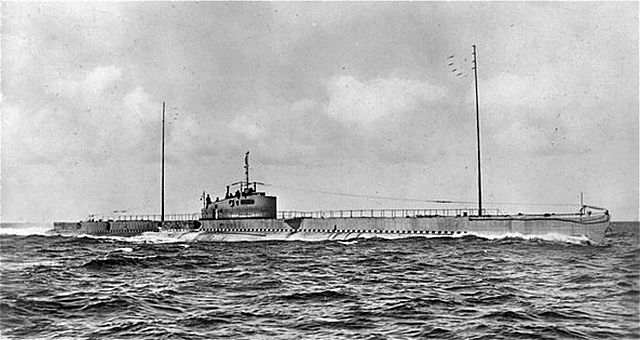
Le Prometehee off Cherbourg circa 1932. Its wireless transmitter masts are hoisted. This was during trials before sinking in 1932. The 100 mm deck gun had not yet been installed. – Src. L’Illustration n°4663, 20 juillet 1932. Plans
Operational career:
It would take too long to detail units per unit, but it was quite rich, in general, and pretty much reflects the wobbly situation of the navy during the war. Some were captured (in England) and continued their career under FNFL banner, handicapped by the lack of spare parts (problem that was partially solved with modifications in US arsenals).
Others more classically turn of the service under the colors of Vichy, most mediterrannée. After the catapult operation, some were immobilized and partially disarmed, others sunk, others were later during Operation Torch by the US Air Force. Finally, many were to be scuttled in Toulon. One of them, Casabianca, escaped instead and went to North Africa. She then made a long career under the FNFL (Free French Navy). All thes submaines will be described more in detail in a future dedicated post.
Characteristics:
Displacement: 1390 t. standard – 2085t. Full Load
Dimensions: 92.5 m long, 8.20 m wide, 4.70 m draft.
Propulsion: 2 propellers, 2 Sulzer diesels, 2 mot. electric, 6000/2000 hp. Surface speed / dive 17/10 knots.
Diving, endurance: 80 m – RA: 14,000 nautical miles (7 knots), 90 nautical dives (7 knots).
Armament: 9 TLT of 550 mm, 2 of 400 mm, 1×100 mm, 1×37 mm, 2×13.2 mm AA.
Crew: 61

Author’s Illustration of the Casabianca
 >Saphir class minelayers (1928)
>Saphir class minelayers (1928)
This class of “diamonds” was known enough during the war to earn its “stripes” within the allied forces and then go on to posterity with a new class of nuclear attack submarines. Built between 1928 and 1935 in Toulon, this class especially designed to anchor mines, was derived from the German UC of the last war, with modern solutions. More on the Saphir Class.
In particular, they had high-capacity lateral mines wells, designed by Normand-Fenaux. The system, simple and effective, will prove very useful. 32 mines could be housed in these 16 wells. The torpedo weapon was reduced to two bow tubes and three (two 400 mm) in a mobile bench at the rear, and fewer refills than usual. In service in 1936, one of these units took on all its importance during the war: Not only did she escape the fate of the French navy by quickly joining the allies, but she was also the only submarine minelayer of the allies, and her career was meritorious.

Author’s rendition of the Saphir
Operational career:
Sapphire, Turquoise and Nautilus were all captured in Bizerte and transferred to the Italians in 1942, and two served for some time under the name of FR112 and 116, in Bizerte. One of these will be sunk on the spot, the others scuttled. The Diamond will be scuttled at Toulon in November 1942, while the Pearl, which like the Ruby had passed quite early on the allied side, will be sunk by mistake in 1944, a fate common to many French ships. The Rubis, captured at Portsmouth during Operation “Catapult”, was later returned to the FNFL. Her career was quite epic, with 22 missions resulting in the direct and indirect destruction of twenty-four ships of the axis (and 683 mines layed) in Norway, the Gulf of Gascoigne and the Atlantic.
Characteristics:
Displacement: 617 t. standard – 924 t. Full Load
Dimensions: 65.90 m long, 7.20 m wide, 4.30 m draft.
Propulsion: 2 propellers, 2 Normand-Vickers diesels, 2 mot. electric, 1300/1000 cv. Surface speed/dive 12/9 knots. Practical depth of diving: 80 m – RA: 7,000 nautical miles surface (7 knots), 70 nautical dives (7 knots).
Armament: 3 TLT of 550 mm, 2 of 400 mm, 1×76 mm, 2×13.2 mm AA, 32 mines.
Crew: 42
 Surcouf Cruiser (1929)
Surcouf Cruiser (1929)

Author’s illustration of the Surcouf, to be redone soon as it seemed she never sported a green hull found in the Mediterranean theater.
Carrying the name of the most famous French corsair of the Napoleonic era, Robert Surcouf (1776-1827), the submersible of the same name is almost a legend. This great sub cruisers followed the projects envisaged in the 1920s, succeeding some experiments of the end of the great war (like the British M class).
Basically, the Surcouf was defined as a privateer, attacking enemy trade shipping and could remain three months at sea, with a large supply of torpedoes, including 400 mm models, specifically dedicated to merchant ships. Possessing two heavy cruiser guns (203 mm) and a reconnaissance seaplane, she had such a combat capability that it could also face surface cruisers and escorts.
She also had spacious holds to house the crew of the torpedoed ships. The specifically designed Besson Seaplane MB411 was tiny and had a limited range. It was originally launched from a catapult removed quickly, and his shed was located behind the massive kiosk. Her eight TLT of 550 mm were distributed in four at the bow, four in a movable bench in the back and fourteen refills, and four of 400 mm in a mobile bank in the front with 12 refills. Her other missions were to liaise with the colonies and to operate with surface squadrons with her artillery.
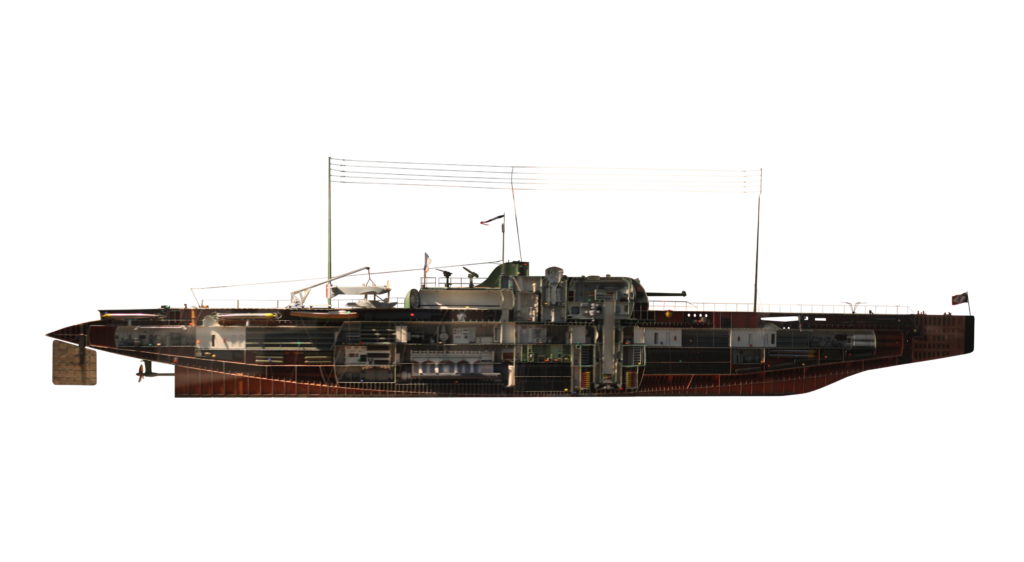
Very large cutout model of the Surcouf (long loading time) – Musée de la marine
Surcouf in action
The Surcouf was not without faults. The implementation of her floatplane proved very difficult and took long time, and in 1938 a gyroplane was tried, but without much success. The Besson was also quite small, so its speed, altitude and radius were limited. Diving time was also quite long for the time. The main artillery and associated turret caused significant stability problems, and the tightness of the whole kit left something to be desired, it also required dedicated work to remedy it in 1937.
In 1940, the Surcouf was in Brest, after a long mission in the West Indies. She sailed in emergency to take refuge in Plymouth, then was captured – not without making four victims – by fire exchange with British troops during operation “Catapult”. Complex and without spare parts, the Surcouf took a long time to put back into service. see a colorized photo by Paul Reynolds (Daily Mail)
In 1941, she was finally accepted into the FNFL which he was one of the jewels. He moved to the Portsmouth Dockyard for modernization, then departed for his first mission in December with corvettes of the Free French under Admiral Muselier. The latter rallied to free France Saint Pierre and Miquelon. She then worked in Bermuda and was lost in the night of February 18 to 19, 1942 in the Gulf of Mexico.
The cause of this loss, coincidentally related to the “Bermuda Triangle” was quite a start of many conspiracy therories and generated many extravagant rumors. The commission of investigation leads to two hypothesis: The mistake and bombing by a PBY Catalina of the US Navy which would have confused it with a Japanese equivalent. Or a collision at sea, on a moonless night, when the submersible al fires shut was charging her batteries on the surface, by the American freighter Thomson Lykes, the latter, possibly also would have made the mistake and rammed her. Be that as it may, the loss of the Surcouf caused 130 casualties, including four British liaison officers.
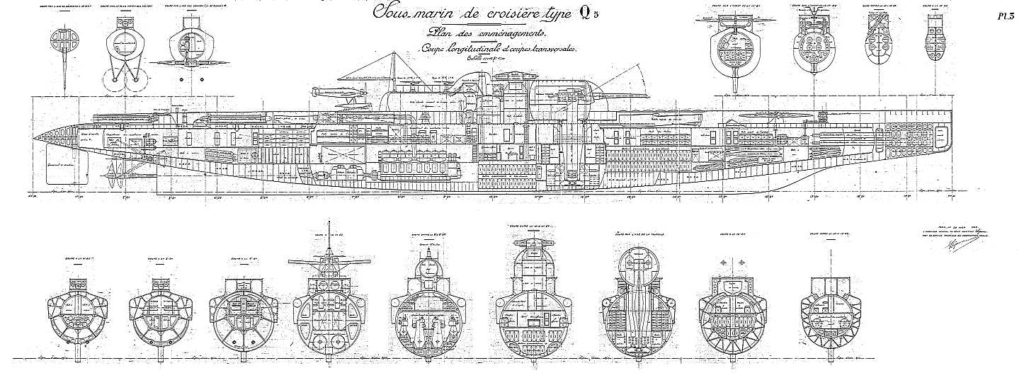
Blueprint of the Surcouf – Plans Musee de la Marine
Characteristics:
Displacement: 2880 t. standard – 4304t. Full Load
Dimensions: 110 m long, 9 m wide, 7.25 m draft.
Propulsion: 2 propellers, 2 Sulzer diesels, 2 mot. electric, 7600/3400 hp. Surface speed / dive 18.5/10 knots.
Armament: 8 TLT of 533 mm, 4 of 400 mm, 2×203 mm, 4×13.2 mm AA (2×2), a Besson Mb411 seaplane.
Crew: 150
*Cover photo: Surcouf, circa 1935, painted in Prussian dark blue – Retreived by Morze, nr.6/1936, Public Domain in Poland & USA.
 Sirène class (1925)
Sirène class (1925)

Illustration of the Naiade in 1942
This coastal submersible class of 600 tons, designed for the Mediterranean, was designed by Loire-Simonot, and the four units built at the shipyards of the Loire at Nantes. Their range was very limited and confined them to a few days patrols. Their torpedoes were launched from fixed and rotating outer tubes specific to France and removed from the Ariane and Circe, including two bow tubes, two other external front, one external fixed rear tube and two mobile bank to the back of the kiosk. Greece ordered 4 units of this type.
The Nymph did not participated in the war: She had been badly damaged in 1938 and was considered irretrievable. The other three, after some patrols between September 1939 and November 1942 were stationed in Toulon where they were scuttled. The Regia marina launched a salvage operation followed by repairs, but like the other units of Toulon, never succeeded. The submarines were sank during allied air raids preparing the landing in Provence.
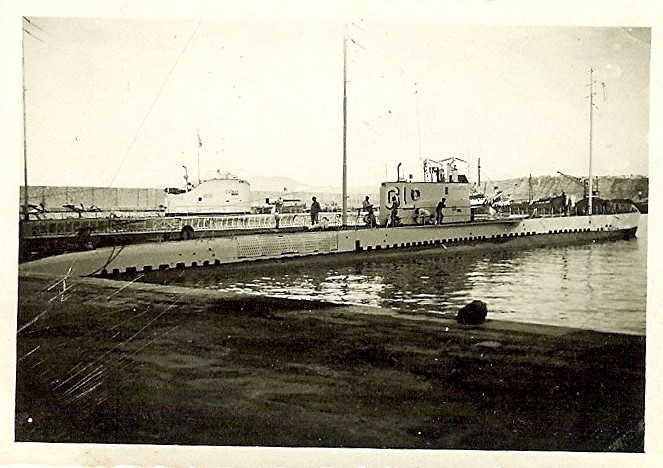
Sirene at Oran, by Manon, personal archives – Released in CC.
Characteristics:
Displacement: 609 t. standard – 757 t. Full Load
Dimensions: 64 m long, 5.20 m wide, 4.30 m draft.
Propulsion: 2 propellers, 2 Sulzer diesels, 2 mot. electric, 1300/1000 cv. Surface speed/dive 14/7,5 knots. Practical depth of diving: 80 m – RA: 7,000 nautical miles surface (7 knots), 70 nautical dives (7 knots).
Armament: 7 TLT of 550 mm, 1 piece of 76 mm.
Crew: 42
 Ariane class (1925)
Ariane class (1925)
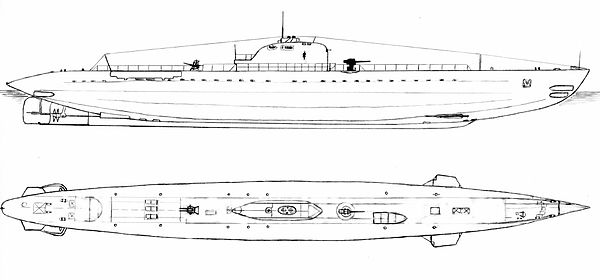
Minerve class blueprints – Derived from Plans marine Nationale, unknown author.
Second series of coastal submersibles of 600 tons, always planned to operate in mediterranean, were built by Normand-Fenaux between 1924 and 1926, the last entering in service in 1927. They were notoriously more reliable and robust than the previous ones, wider of one meter, but repeated the unusual armament in front outer tubes, bank of surface tubes aft, and classic tubes in the bow and stern. Of the four launched, Ondine did not participated in the war, lost in 1928 following an accident.
The other three were lost during Operation Torch (Allied landing in North Africa), two will be sunk in Oran and the Eurydice scuttled in Toulon in November 1942 at the time of Operation “Lila” (Toulon’s capture by the Wehrmacht).
Characteristics:
Displacement: 626 t. standard – 787 t. Full Load
Dimensions: 66 m long, 6.20 m wide, 4.20 m draft.
Propulsion: 2 propellers, 2 Normand-Vickers diesels, 2 mot. electric, 1250/1000 cv. Surface speed/dive 14/7,5 knots. Practical depth of diving: 80 m – RA: 7,000 nautical miles surface (7 knots), 70 nautical dives (7 knots).
Armament: 7 TLT of 550 mm, 1 piece of 76 mm, 2 machine gun of 8 mm AA.
Crew: 41
 Circé class (1925)
Circé class (1925)
Third series of coastal submersibles of 600 tons from the FY1925 program, they were this time built by Schneider-Laubeuf, the famous engineer that spawn an entire generation of submarine design. They were shorter than the Ariane, and in doing so a little more agile. Their armament remained unchanged in its typically French arrangement at the time. The class consisted of units with mythological names, like the other submersibles of the second class, Circe, Calypso, Thetis, and Doris.
Their fate was quickly sealed during the war: The Doris was torpedoed by the U9 in March 1940, while operating in Norway, the Circé and the Calypso were based in Bizerte, and there, were captured by the Italians, then integrated into the Regia Marina as FR117 and 118, and both were destroyed by the allied air force, the second then flying clors of the Kriegsmarine in 1944. The Thetis was scuttled at Toulon in November 1942.
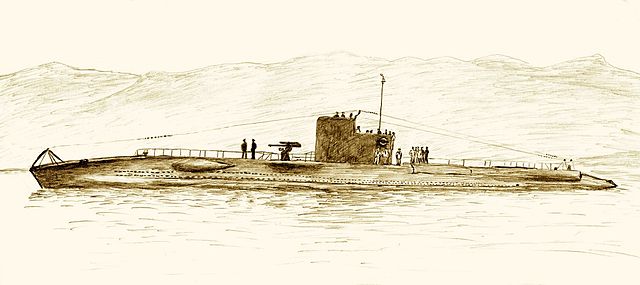
Drawing of the Doris – By К.Е.Сергеев, released in CC, 2013.
Characteristics:
Displacement: 615 t. standard – 776 t. Full Load
Dimensions: 62.5 m long, 6.20 m wide, 4 m draft.
Propulsion: 2 propellers, 2 Schneider-Laubeuf diesels, 2 mot. electric, 1250/1000 cv. Surface speed/dive 14/7,5 knots. Practical depth of diving: 80 m – RA: 7,000 nautical miles surface (7 knots), 70 nautical dives (7 knots).
Armament: 7 TLT of 550 mm, 1 piece of 76 mm, 2 machine gun of 8 mm AA.
Crew: 41
 Argonaute class (1929)
Argonaute class (1929)

Illustration of the Argonaute in 1942
This series of coastal submersibles of 630 tons constituted the 1929-1932 period. They were an improvement of the previous serie. More spacious, with more autonomy, faster and stable diving. Their armament was always divided into surface and hull tubes, the difference being that the mobile bank aft this time housed 400 mm tubes for merchant shipping.
Of the four units, only the Argonaut was lost, bombed by American escorts while on its way to oppose Allied landing of Operation Torch on November 8, 1942, off Oran. The other three went to the FNFL and survived the conflict. They will be demobilized in 1946 and broken up soon after.

Sketch of the Argonaute – Author: К.Е.Сергеев 2013 Released in CC.
Characteristics:
Displacement: 630 t. standard – 798 t. Full Load
Dimensions: 63.5 m long, 6.40 m wide, 4.20 m draft.
Propulsion: 2 propellers, 2 Schneider-Carel diesels, 2 mot. electric, 1300/1000 cv. Surface speed / dive 14/9 knots. Practical depth of diving: 90 m – RA: 10,000 nautical miles (7 knots), 100 nautical dives (7 knots).
Shielding: none
Armament: 6 TLT of 533 mm, 2 TLT of 400 mm, 1 piece of 76 mm, 1 machine gun of 13.2 mm AA.
Crew: 41
 Diane class (1932)
Diane class (1932)

Illustration of the Oréade 1942
This second series of “630 tons” was built by Normand-Fenaux, this time with nine units, the last of which entered service in 1935. They were a little larger and stronger than the Argonauts, also faster on the surface thanks to more powerful diesels. Their armament was the same as the Argonauts, except for the surface tubes englarged to 550 mm. All but three (who went to the FNFL after Nov. 1942) were sunk, scuttled or lost during the landing in North Africa.
Characteristics:
Displacement: 671 t. standard – 810 t. Full Load
Dimensions: 64.4 m long, 6.20 m wide, 4.30 m draft.
Propulsion: 2 propellers, 2 Normand-Vickers diesels, 2 mot. electric, 1400/1000 cv. Surface speed/dive 14/9 knots.
Practical depth of diving: 90 m – RA: 9000 nautical miles (7 knots), 100 nautical dives (7 knots).
Armament: 6 TLT of 550 mm, 2 TLT 400 mm, 1 piece of 76 mm, 1 machine gun of 8 mm AA.
Crew: 41
 Orion class (1932)
Orion class (1932)

Illustration of the Orion in 1944.
This series of 630 tons was the last, two units by the Loire Dubigeon shipyards. They were a little lighter than the others, but resumed most of their characteristics. In 1940, they were based on the Atlantic. With the advance of the German troops, they joined Portsmouth. It was there that they were interned during Operation Catapult. A few months later, they resumed service under free French naval forces. They operated thus on the allid side until 1943, then were cannibalized, for lack of parts and remained in France to repair the Juno and the Minerve. What remains will be broken up soon after.
Characteristics:
Displacement: 658 t. standard – 787 t. Full Load
Dimensions: 67.7 m long, 6.20 m wide, 4.40 m draft.
Propulsion: 2 propellers, 2 Sulzer diesels, 2 mot. electric, 1400/1000 cv. Surface speed / dive 14/9 knots. Practical depth of diving: 90 m – RA: 9000 nautical miles (7 knots), 100 nautical dives (7 knots).
Armament: 6 TLT of 550 mm, 2 TLT 400 mm, 1 piece of 76 mm, 1 machine gun of 8 mm AA.
Crew: 41
 Minerve class (1934)
Minerve class (1934)

Blueprint of the Iris. Src. (presumably) К.Е.Сергеев 2013 Released in CC – Researched.
This official admiralty Design based on the 630 tonnes, represented a whole change of policy away from private designs and towards greater standardization. Authorized in 1930 except for the last two (FY 1936 program). They had a simplified TT armament, with four TT forward and two aft, and a triple 15.7 bank in mount abaft of the CT with no reloads. They also had two 13.2 mm heavy machine guns for AA defence, quite an improvement. Range and depht were the same as Aurgonaute. Iris was interned in Spain from 1942 to the end of the war. Junon and Minerve served with the FNFL from 1940, Vénus was scuttled in Toulon, and the remaining Pallas and Céres at Oran.
Characteristics:
Displacement: 662 t. standard – 856 t. Full Load
Dimensions: 68.10 m long, 5.62 m wide, 4 m draft.
Propulsion: 2 propellers, 2 Normand-Vickers diesels, 2 electric mot., 1800/1230 cv. Surface speed / dive 14/9 knots. Practical depth of diving: 90 m, Oil 60 tons
Armament: 6 x550 mm (21.7 in) TT, 3 x400 mm (15.7 in), 1 x 76 mm (3in/35), 2 x13.2 mm HMG AA.
Crew: 42

FFL Submarine Junon, in Plymouth Sound. Licence IWM (cc)
 Aurore class (1939)
Aurore class (1939)

Illustration of the Aurore in July 1940
After a stop in all armament programs following the arrival of the Popular Front in 1936, the FY1938 program resulted in a new series of coastal submersibles of 630 tons. It was also the last. In reality they were clearly bigger and heavier, designed to face the Atlantic.
One of their oddities was a 100 mm gun installed behind a semi-turret extending the front of the kiosk, tailored for the rough seas of the Atlantic. Their radius of action was much superior to any of the “600 tons”, and their armament not counting anymore the outer tubes forward, kept a rotatable triple bank TT aft. All torpedo tubes were uniformly 550 mm. Since most of these subs were not yet operational by the time the German forces arrived in sight of the yards of the northern coast (except for the Aurora), their fate was sealed.
Aurora was in the south of France, and will be completed and scuttled at Toulon in November 1942. The Creole, built by Augustin Normand, was towed to England to avoid capture. She was completed according to British specifications and ultimately quite different from its original design. Thus modernized, this boat had a fairly long career after the war. All the others (6 units) were actually captured, but only one entered service (UF2 ex-La Favorite) under the German flag, and sunk in July 1944. Four others would be completed after the war with many modifications and had quite a long career (More on a dedicated post).

A Model of L’Africaine – Musee de la Marine – CC
Characteristics:
Displacement: 658 t. standard – 787 t. Full Load
Dimensions: 67.7 m long, 6.20 m wide, 4.40 m draft.
Propulsion: 2 propellers, 2 Sulzer diesels, 2 mot. electric, 1400/1000 cv. Surface speed / dive 14/9 knots. Practical depth of diving: 90 m – RA: 9000 nautical miles (7 knots), 100 nautical dives (7 knots).
Armament: 6 TLT of 550 mm, 2 TLT 400 mm, 1 piece of 76 mm, 1 machine gun of 8 mm AA.
Crew: 41
Projects
Submarines development went on with new designs, whuich were delayed because of a political decision and never completed: The Roland Morillot, Emeraude and Phénix classes.

Possible appearance of the Morillot (Cdts navypedia)
Roland Morillot
The first of these large oceanic types were ordered in 1934, and other orders followed in 1937, 1938 and eight more authorized in 1940. These were fundamentally larger and much improved versions of the 1500 tonnes, carrying 85 tons more of fuel, and had a 10,000 nautical miles radius at 10 knots. The three aforementioned above were the only one launched before the war started: Roland Morillot, La Praya, and Martinique at Cherbourg Nyd. They were all destroyed on slip on 18.6.1940 to avoid capture. Guadeloupe, Réunion and all the other unnamed eight were cancelled.
Emeraude
These were essentially enlarged and improved version of the Saphir class minelayer types. Eperaude was authorized in 1937, Agate, Corail, Escarbouche in 1938. The first was advanced and destroyed on slip in 23.6.1940, the other thre cancelled. Their range was 5600 nauticl miles at 12 knots and 90 at 4 knots. They could carry 40 mines.
Phénix
These were coastal developments of the Aurore type, at 1056 tons (1252 submerged), with a lenghtened hull and tropical service equipments and fittings, but only one was ordered and started in 1939, Phénix. The other 12 named after revolutionary era monthes (Brumaire, etc.) were all cancelled.
Allied Transfers
The British leased some of their boats to the FNFL (Free French Navy). These were one “U” class (Vox, renamed Curie), and two “V” class, Vineyard (Doris) and Vortex (Morse). The first ytransfer occured in 1.5.1943 and the others on 3.6.1944 and 18.11.1944, returned after the war. The Royal Navy also captured the Italian Acciaio class Bronzo in 12.7.1943 and transferred her to the French in 29.1.1944, as Narval. She was used as an ASDIC training ship, and sold for scrap in 1949.
ex-German (postwar)
The French obtained precious units from the Kriegsmarine after the war: The U2518 (From the Royal navy), a type XXI transferred in 1946 and renamed Roland Morillot, broken up in 1968 after having being thoroughly studied and tested. Also one Type XXIII, the U2326 was transferred from the Royal Navy in 1946 but was lost when testing off Toulon in 6.12.1946. She was never renamed and kept her original denomination.
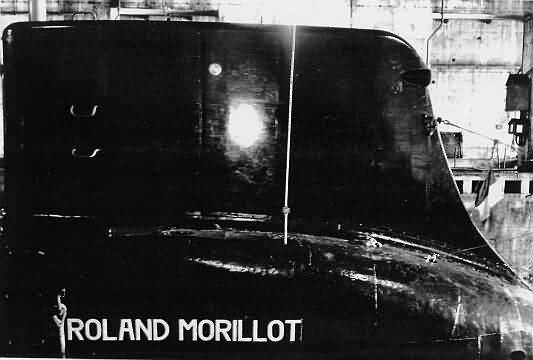
Morillot after postwar modifications of the Kiosk – src: u-boote.fr
Sources/Read More
Conway’s all the world fighting ships 1906-1921, 1922-1946.
https://French submarine Surcouf
French submarine Curie
u-boote.fr: roland Morillot
French submarines list
French 600 Series submarines
roland-morillot class 1st class subs

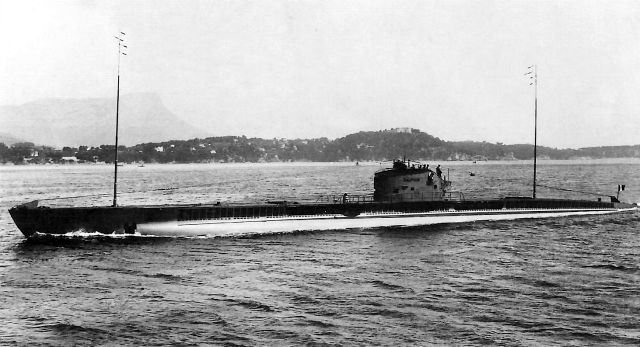

 Latest Facebook Entry -
Latest Facebook Entry -  X(Tweeter) Naval Encyclopedia's deck archive
X(Tweeter) Naval Encyclopedia's deck archive Instagram (@navalencyc)
Instagram (@navalencyc)





 French Navy
French Navy Royal Navy
Royal Navy Russian Navy
Russian Navy Armada Espanola
Armada Espanola Austrian Navy
Austrian Navy K.u.K. Kriegsmarine
K.u.K. Kriegsmarine Dansk Marine
Dansk Marine Nautiko Hellenon
Nautiko Hellenon Koninklije Marine 1870
Koninklije Marine 1870 Marinha do Brasil
Marinha do Brasil Osmanlı Donanması
Osmanlı Donanması Marina Do Peru
Marina Do Peru Marinha do Portugal
Marinha do Portugal Regia Marina 1870
Regia Marina 1870 Nihhon Kaigun 1870
Nihhon Kaigun 1870 Preußische Marine 1870
Preußische Marine 1870 Russkiy Flot 1870
Russkiy Flot 1870 Svenska marinen
Svenska marinen Søværnet
Søværnet Union Navy
Union Navy Confederate Navy
Confederate Navy Armada de Argentina
Armada de Argentina Imperial Chinese Navy
Imperial Chinese Navy Marinha do Portugal
Marinha do Portugal Mexico
Mexico Kaiserliche Marine
Kaiserliche Marine 1898 US Navy
1898 US Navy Sovietskiy Flot
Sovietskiy Flot Royal Canadian Navy
Royal Canadian Navy Royal Australian Navy
Royal Australian Navy RNZN Fleet
RNZN Fleet Chinese Navy 1937
Chinese Navy 1937 Kriegsmarine
Kriegsmarine Chilean Navy
Chilean Navy Danish Navy
Danish Navy Finnish Navy
Finnish Navy Hellenic Navy
Hellenic Navy Polish Navy
Polish Navy Romanian Navy
Romanian Navy Turkish Navy
Turkish Navy Royal Yugoslav Navy
Royal Yugoslav Navy Royal Thai Navy
Royal Thai Navy Minor Navies
Minor Navies Albania
Albania Austria
Austria Belgium
Belgium Columbia
Columbia Costa Rica
Costa Rica Cuba
Cuba Czechoslovakia
Czechoslovakia Dominican Republic
Dominican Republic Haiti
Haiti Hungary
Hungary Honduras
Honduras Estonia
Estonia Iceland
Iceland Eire
Eire Equador
Equador Iran
Iran Iraq
Iraq Latvia
Latvia Liberia
Liberia Lithuania
Lithuania Mandchukuo
Mandchukuo Morocco
Morocco Nicaragua
Nicaragua Persia
Persia San Salvador
San Salvador Sarawak
Sarawak Uruguay
Uruguay Venezuela
Venezuela Zanzibar
Zanzibar Warsaw Pact Navies
Warsaw Pact Navies Bulgaria
Bulgaria Hungary
Hungary

 Bundesmarine
Bundesmarine Dutch Navy
Dutch Navy Hellenic Navy
Hellenic Navy Marina Militare
Marina Militare Yugoslav Navy
Yugoslav Navy Chinese Navy
Chinese Navy Indian Navy
Indian Navy Indonesian Navy
Indonesian Navy JMSDF
JMSDF North Korean Navy
North Korean Navy Pakistani Navy
Pakistani Navy Philippines Navy
Philippines Navy ROKN
ROKN Rep. of Singapore Navy
Rep. of Singapore Navy Taiwanese Navy
Taiwanese Navy IDF Navy
IDF Navy Saudi Navy
Saudi Navy Royal New Zealand Navy
Royal New Zealand Navy Egyptian Navy
Egyptian Navy South African Navy
South African Navy






























 Ukrainian Navy
Ukrainian Navy dbodesign
dbodesign
It would have been interesting to see the results of the Surcouf in action. I wonder though how much it could have actually put those twin 203mm guns to use seeing as submarines generally dont want to surface unless its a target that cant really defend itself.
Hi Seth, sorry, scheduling error, it was supposed to be published in 2018, not 2017. Hard to get my head around this new year 😉
Well, at that time submarines were “submersibles”, cruising on surface by default, so this artillery made sense to carry a heavy and swift blow to any freighter and escort. I have no idea if this weaponry was also a development in naval bombardment in mind like 1918′ British M3, but it makes sense by carrying a seaplane for observation. Compared to that, Japanese cruisers J1 had only deck guns of about 140 mm and the American Argonaut serie (huge boats at 3960 t) carried also 152 mm deck guns (6 in). They had a much larger traverse but no protection. As i remembered only the 1921 british X1 had four 5.2in/42 QF Mk I guns in two twin turrets. Anyway the Surcouf had many problems linked to this system, not counting a limited range of 16 km. I will be back on this more in depth on a standalone post dedicated to the Surcouf.
Do you have any information about a French submarine that surrendered in New Orleans, Louisiana in 1940 , rather than return home after France fell to the Germans at the beginning of WW2.
I have no information about this case, sorry. The bulk of hypothetical French submarines interned in this area would have been from Martinique, Caribbean, where the CV Béarn and cruisers Jeanne d’Arc and Bertin were stationed after 1940, rather than going into New Orleans. It could have been only one of the oceanic types (Redoutable class) making a stop there or possibly the Surcouf, but i have no mention of this anywhere.
-Very intresting website, but…
At Saphir class you write: she was also the only submarine minelayer of the allies, and her career was meritorious.
This is not correct. The Netherlands O-19 and O-20 had the same system of minelaying. During WW II, the O-19 did lay 2 mine barriers
Thanks Jantinus
… Indeed that’s a pretty big shortcut. I meant the western allies, on the northwestern Atlantic/north sea theater of operation: Netherland had an amazing fleet of subs, operating in the east indies and pacific, a whole subject – in fact there is a an article in prep for this subject. Also the Soviets had a minelaying class operating in the baltic & black sea, the Leninec class and the USN also laid minefields in the pacific (http://www.navweaps.com/Weapons/WAMUS_Mine_Success.pdf)